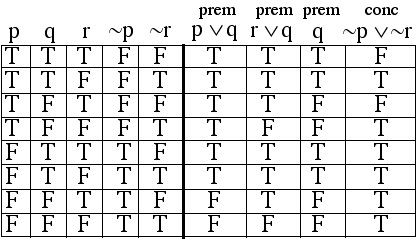EXAMPLE 2.3.12 SOLUTION
We start by symbolizing the argument.
Let p be the statement "You have jumper cables."
Let q be the statement "Our date is cancelled."
Let r be the statement "You have a credit card."
The argument has this symbolic form:

Now we make a truth table having a column for each premise and for the conclusion.

Notice that in the first row, every premise is true while the conclusion is false. This indicates that the argument is INVALID.